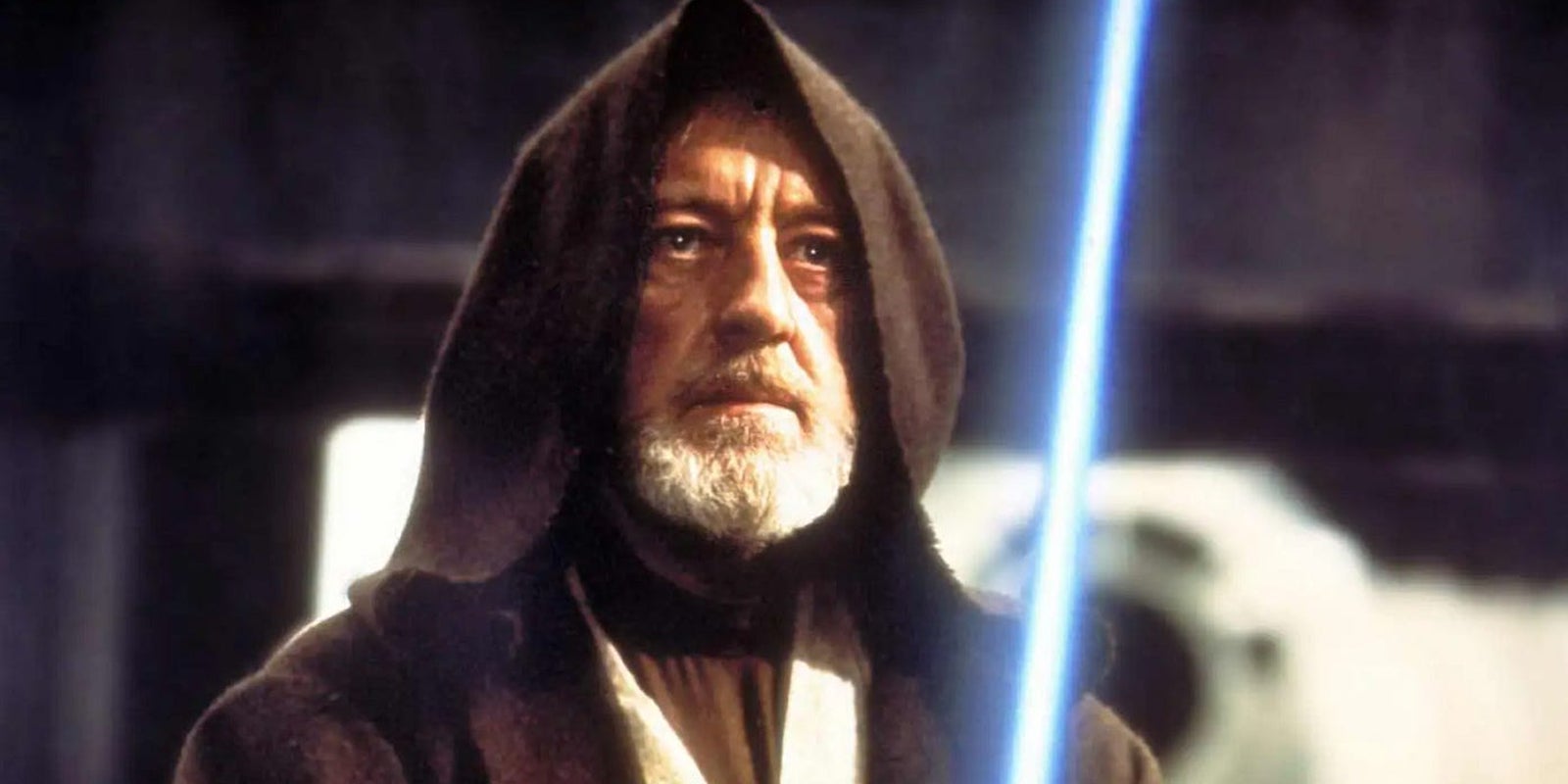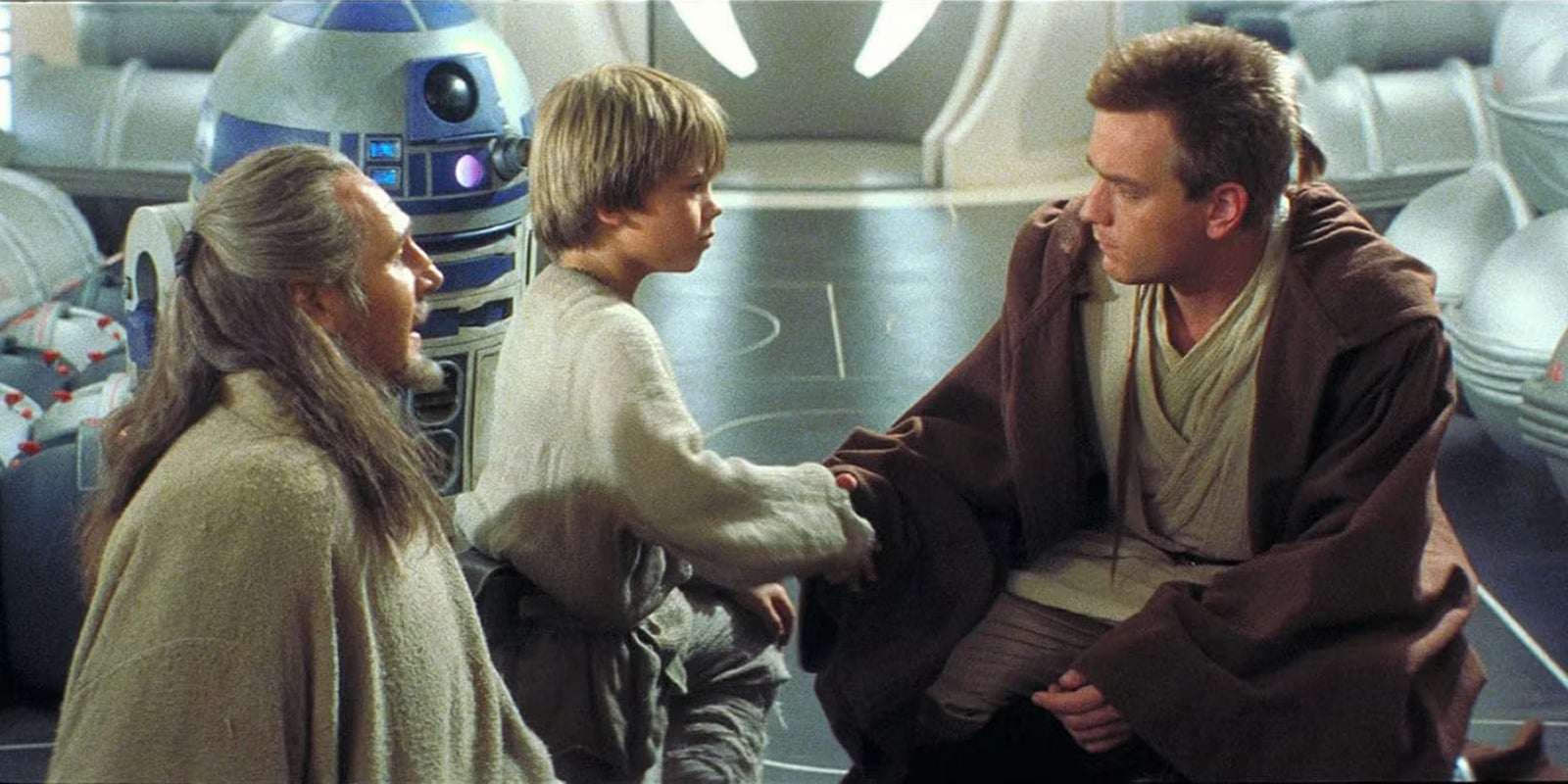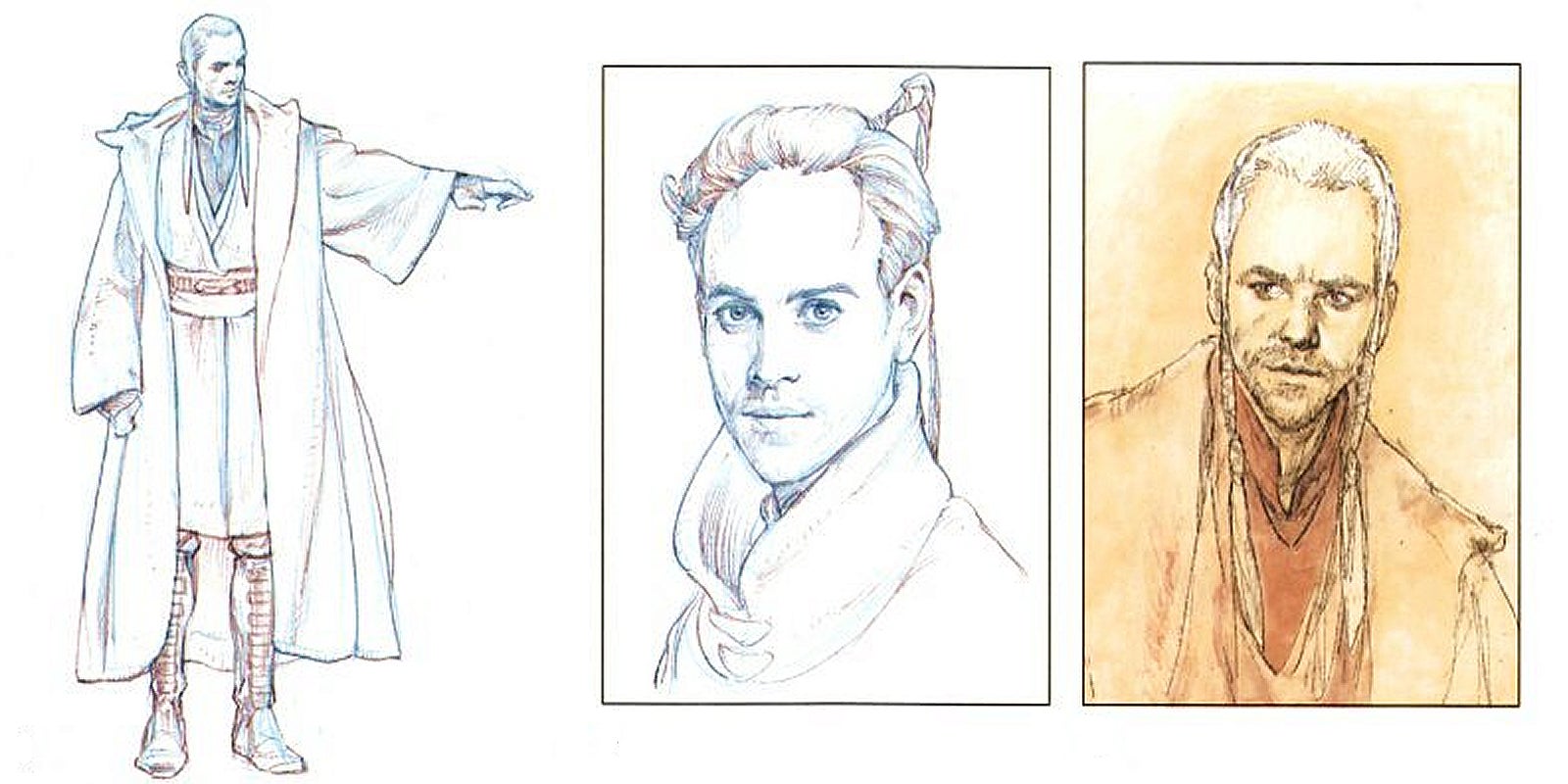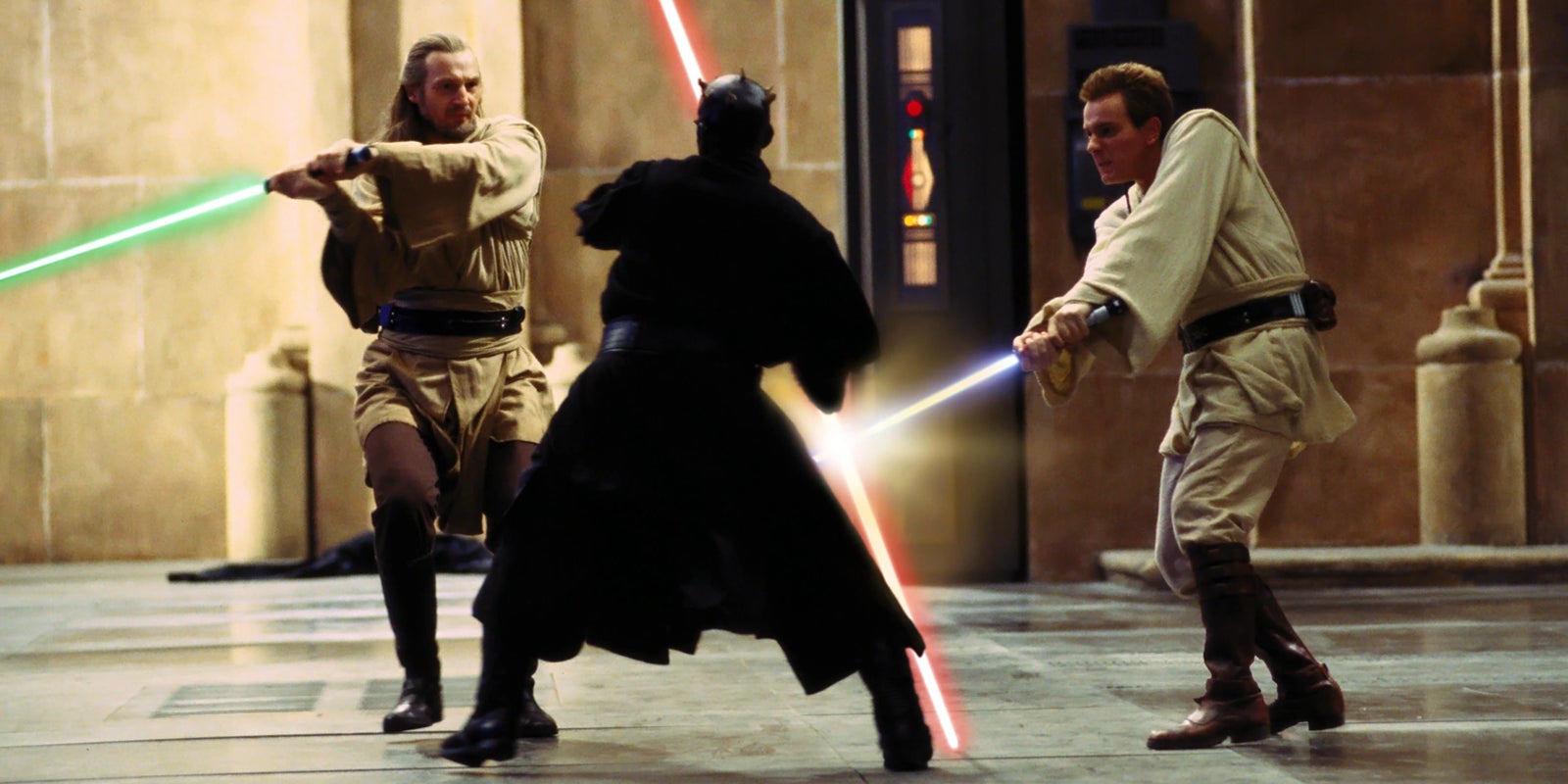If you click on a link and make a purchase we may receive a small commission. Read our editorial policy.
George Lucas' original plans for Star Wars: The Phantom Menace would've changed Obi-Wan Kenobi forever
How George Lucas almost gave Obi-Wan Kenobi a twist as big as Darth Vader's 'I am your father' reveal

This article was created with support from our Popverse Members. To learn how to become a Popverse Member, click here.
25 years ago, Star Wars: Episode I – The Phantom Menace arrived in theaters. It’s impossible to describe the hoopla surrounding the film’s release to anyone who wasn’t alive then. George Lucas winding back the clock to an even longer time ago in a galaxy far, far away and laying bare the Star Wars saga’s origins? Everything was about to change. Yet when The Phantom Menace finally dropped, it was relatively light on game-changing revelations.
That wasn’t always the plan, though. As the late author and editor J.W. Rinzler observed with remarkable casualness in the preface to his 2013 tome Star Wars Storyboards: The Prequel Trilogy, Lucas’ early Phantom Menace scripts included a massive plot twist. Indeed, this narrative curveball was so big, it would’ve changed the way we see Obi-Wan Kenobi – not to mention the original Star Wars trilogy – forever.
Star Wars: The Phantom Menace’s unused Obi-Wan change blows its actual retcons away
Of course, the version of Episode I that wound up on the big screen does revise at least some of the canon from Episodes IV, V, and VI.
For example, nothing in the original Star Wars trilogy directly links Darth Vader to C-3PO, but The Phantom Menace establishes that Vader built the prissy protocol droid as a child. What’s more, The Empire Strikes Back indicates that Obi-Wan’s Jedi teacher was Yoda, whereas The Phantom Menace gives him another mentor, Qui-Gon Jinn. And Qui-Gon discovers future Vader Anakin Skywalker, not Obi-Wan as implied in Return of the Jedi.
But these are trivial tweaks in the grand scheme of things. That’s especially true compared to the unused continuity overhaul Lucas cooked up for Episode I, which (in keeping with the trend you’ll note above) heavily involved Qui-Gon. Indeed, Lucas’ early conception of the maverick Jedi Master’s relationship with Obi-Wan would’ve marked The Phantom Menace’s most dramatic departure from existing lore, despite Qui-Gon not even appearing in initial drafts.
That’s right: the first few Phantom Menace screenplays started out with Obi-Wan already a fully-fledged Jedi Knight, flying solo. As such, in these scripts, Obi-Wan did and said everything Qui-Gon does and says in the finished film. Eventually, Lucas added Qui-Gon into the mix, however, he was younger than Obi-Wan. This is all widely reported on stuff, if not necessarily commonly known. What’s less talked about – even on Wookieepedia – is that Lucas seriously considering having Qui-Gon become Obi-Wan.
How does Qui-Gon becoming Obi-Wan work in Lucas’ early drafts?

Confused? I’ll let Rinzler explain. “Obi-Wan Kenobi was the older one, the Master, and Qui-Gon Jinn was the Padawan,” he wrote in his Star Wars Storyboards preface. “And the two would argue because, while Obi-Wan trusted his instincts, his apprentice, Qui-Gon, wanted to do everything by the book. In the early story, it is Qui-Gon who watches Maul kill Obi-Wan, goes berserk, and uses the dark side to help him exterminate Darth Maul. As he cradles his dying Master, Qui-Gon promises to take on Obi-Wan’s quest – and to take on his Master’s name.”
Clearly, this would’ve had huge implications for wider Star Wars canon. The guy we thought was Obi-Wan in the original trilogy – the venerable old wizard played by Alec Guinness? Kind of a fraud. Or if that’s a bit strong, not who we (or Luke Skywalker) thought he was. All this time, we’ve really been watching another guy: Qui-Gon. (Incidentally, according to Rinzler, concept/storyboard artist Iain McCaig, Lucas envisioned this twist as putting a fresh spin on the exiled Obi-Wan’s wistful response to hearing ‘his’ name in Episode IV, A New Hope.)
Qui-Gon assuming Obi-Wan’s identity could’ve had knock-on effects for The Phantom Menace’s casting, as well. Would Liam Neeson and Ewan McGregor still have portrayed Qui-Gon and Obi-Wan, respectively? Would they have swapped roles? Or would Lucas have hired other actors instead? Concept art of a fresh-faced Joseph Fiennes as Qui-Gon and a grizzled Kiefer Sutherland as Obi-Wan in The Art of Star Wars: Episode I – The Phantom Menace hints he might’ve.

Regardless, our impression of Guinness’s Obi-Wan would’ve never been the same.
George Lucas’ scrapped Obi-Wan/Qui-Gon change would’ve driven fans wild

Would Star Wars fans have universally embraced this? Probably not. Qui-Gon becoming Obi-Wan is exactly the kind of retrospective alteration that the diehard faithful tends to hate – and understandably so. After all, it dramatically changes a key supporting character’s status quo, without meaningfully affecting the movies’ outcome. Spoilers: Luke and his pals still bring down the Empire, irrespective of whether the Obi-Wan we meet is the genuine article.
But at the same time, retconning the original trilogy’s Obi-Wan as Qui-Gon is arguably the kind of big storytelling swing Lucas should’ve taken with The Phantom Menace. Like all prequel tales, The Phantom Menace must contend with an unavoidable narrative hurdle: we already know how it ends. Obi-Wan has to make it out of the movie alive, because we’ve already encountered his older self in A New Hope. Unable to tittilate audiences with what happens in Episode I, Lucas had to lean into how it happens to deliver thrills.
He had to surprise us with specifics – hitherto unknown backstory details that reframe what we know (or think we know) about our heroes and villains and their world. Yet had Lucas followed through on his big Obi-Wan/Qui-Gon plot twist, he could’ve tapped into the power of both what and how. Whether you love the concept or hate it, Obi-Wan dying in The Phantom Menace would’ve been shocking. It’s the kind of “the hell…?” moment that makes even franchise veterans sit up in their seats. Because that’s not what happens, right?
But more than that, it recontextualizes every ‘Obi-Wan’ scene in Episodes IV-VI in a way that makes Episode I – and the wider prequel trilogy – seem like a more worthwhile exercise. Maybe we don’t know everything about our favorite characters? And that’s exciting.
Obi-Wan is still who you think he is – but what if he wasn’t?

At any rate, Qui-Gon becoming Obi-Wan in The Phantom Menace didn’t happen. Lucas changed his mind, rewrote the script yet again, and Qui-Gon and Obi-Wan remain distinctly separate characters to this day. So, when you watch Alec Guinness’s OG Obi-Wan yakking away at Luke, you can rest assured that off the various half-truths and outright lies he tells the farmboy, his real name ain’t one of them.
There’s an undeniable comfort in that, too. Obi-Wan spins enough “certain point of view” deceptions in the original Star Wars trilogy as it is; impersonating a dead man (however benign his reasons) starts to tip him over into pathological liar territory. Perhaps it’s better to preserve the noble-if-Machiavellian figure we know and love, rather than out him as a phony.
Still, imagine if Lucas had gone there? It would’ve completely changed Star Wars – and not just in 1999, but forever.
Not done with Star Wars yet? Dive into the films and TV shows with our Star Wars watch order, or debate on which was the best with our ranked list of the best (and worst) Star Wars movies. And since it's now upon us, follow along with Popverse's coverage of The Acolyte.
Follow Popverse for upcoming event coverage and news
Find out how we conduct our review by reading our review policy
Let Popverse be your tour guide through the wilderness of pop culture
Sign in and let us help you find your new favorite thing.
















Comments
Want to join the discussion? Please activate your account first.
Visit Reedpop ID if you need to resend the confirmation email.